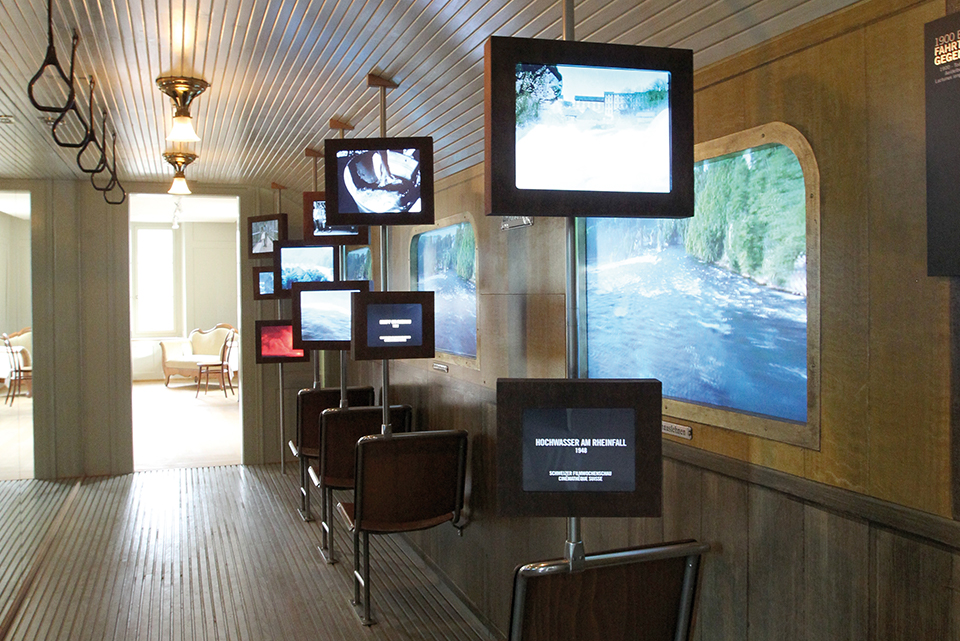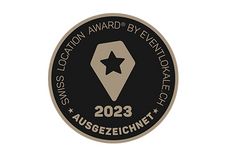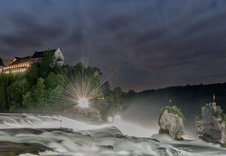Room 1: Bleuler Hall
The Bleuler Painting School around 1848. The panoramic paintings by Louis Bleuler – realistic landscapes – were very popular. His wife Antoinette sold them throughout Europe as well as to Rhine Falls tourists.
Room 2: Everyday life at the Rhine Falls
Sebastian Münster (1488–1522), an expert on cosmography, published the first wood cut illustration of the Rhine Falls, entitled “Cataracta Rheni”, in his “Cosmographia” in 1544. (Cosmography: description of the earth, precursor to Geography)
Room 3: Dutch Corner
Prominent visitors: Emperor Ferdinand I visited the Rhine Falls with an entourage of 300 people in 1563. An explosive proposal in 1609: Dutch merchants demonstrated how the Rhine Falls, which represented an obstacle to transport, could be blasted away.
Room 4: Waibel Chamber
Another explosive attempt: the engineer J. J. Waibel submitted a project to remove the Rhine Falls in 1821.
Room 5: Romantic Era Room
Many eminent guests. Between 1777 and 1814 – the era of the so-called Grand Tour – the German Emperor Joseph II, Tsar Alexander I and J. W. von Goethe were among the visitors to Schloss Laufen.
Room 6: The dream of industry and railways
Industrialization significantly changed the surroundings of Schloss Laufen between 1840 and 1860. The opening of the Rhine Falls Railway launches a virtual boom in the hotel business.
Room 7: Belle Époque Suite
Tourism at the Rhine Falls is at its zenith. Austrian Emperor Franz Josef I and his wife Elisabeth (Sisi) stayed overnight at Hotel Schweizerhof, near the waterfall.
Room 8: Wedding at the Rhine Falls
The ambience of Schloss Laufen has always been the setting for feasts and celebrations. Victorine Louise Bleuler – daughter of the landscape artist Louis Bleuler – married tourism pioneer and hotelier Franz Wegenstein here in 1864.
Room 9: Aluminium Room
The industrialist Johann Georg Neher (1788–1858) received the right to use the water power at the Rhine Falls, and founded the present-day SIG and an aluminium smelter. However, on of his company’s power plant project failed in 1888.
Room 10: Journey into today
Historic film material shows the political and touristic development from 1912 to 2009, including a demonstration against the Rheinau dam project in the 1950s and the development of mass tourism after 1960.
Room 11: Chair Room
You just completed the tour of the museum and got acquainted with the many forward and lateral thinkers associated with the Rhine Falls. A chair is dedicated here to each of these personalities. Take a seat and learn more about the life of each of these extraordinary people.










